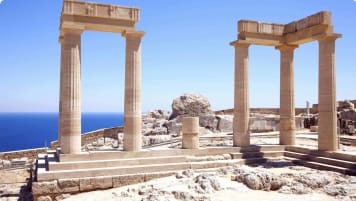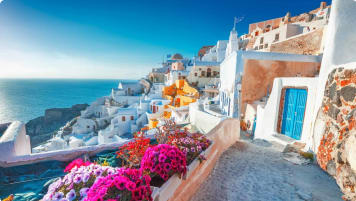Dawn of Greek Civilization: The Definitive Guide for Travellers
The Beginning of Human Civilisation Ancient Greece stands out as a pivotal civilization that significantly influenced human progress. The period between 800 B.C. and 500 B.C., considered Ancient Greece, marked a flourishing era in various…
14 Mar 19 · 7 mins read
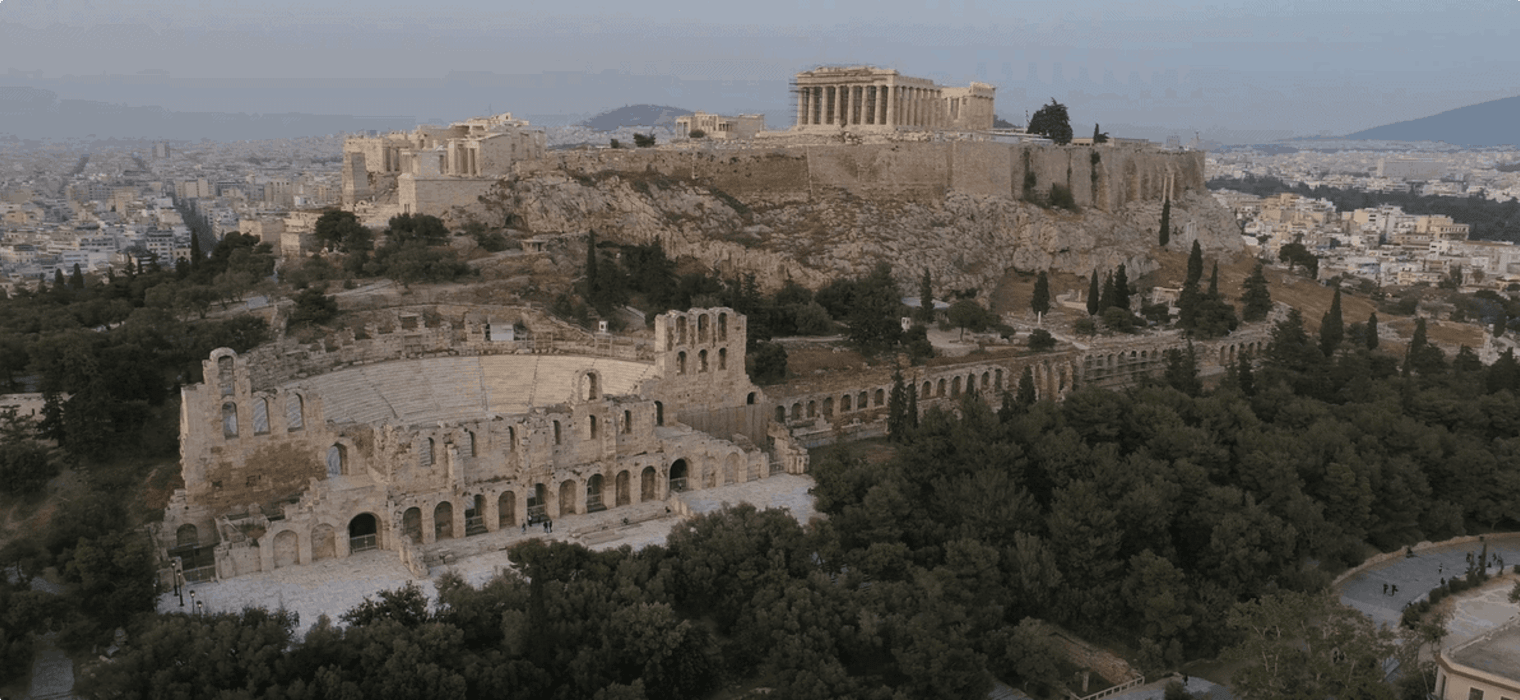
The Beginning of Human Civilisation
Ancient Greece stands out as a pivotal civilization that significantly influenced human progress. The period between 800 B.C. and 500 B.C., considered Ancient Greece, marked a flourishing era in various fields of human knowledge. However, the roots of civilization trace back earlier when mankind transitioned from hunter-gatherer societies to agricultural communities during the Stone Age in Greece. The Greek islanders played a crucial role in this evolution as they expanded their agricultural practices, fostering a hierarchical social structure where certain farms thrived more than others. This development attracted populations from neighbouring regions, leading to growth both on the islands and the mainland, laying the groundwork for the ancient and contemporary Greek societies. This article delves into the pre-Ancient Greek history, exploring the Cycladic, Minoan, and Mycenaean civilizations that preceded the renowned period of Ancient Greece, shaping the course of Greek and ultimately human history.

The Earliest Greek Inhabitants
The Greek islands harbor a wealth of archaeological discoveries dating back to ancient times. Inhabited since the Neolithic Period, around 6000 to 2900 B.C., these islands reveal crucial evidence of the origins of ancient Greece. Renowned author Tony Spawforth, in “The Story of Greece and Rome,” recounts a significant find from 1968: the remains of a caveman carbon-dated to 7000 B.C. Excavations at the same site unearthed obsidian tools, suggesting advancements in tool usage by the hunter-gatherer societies around 8500 B.C. This discovery underscores early Greeks’ migration to various Mediterranean islands, facilitated by the region’s close proximity to other lands. Recent research indicates that the agricultural practices of early Greeks, including crops and livestock, have roots in present-day Turkey. The transition to farming marked the emergence of wooden structures and pottery among these ancient peoples.
Bronze Age Greece (approximately 3000 B.C. to 1200 B.C.)
The origins of metalworking in Greek civilization remain a compelling mystery, with the first peoples delving into extracting and crafting metals for tools. By the 3000s B.C., the Greeks had initiated copper work, as confirmed by the unearthing of two copper axe-heads in Sesklo (Spawforth 2018, p.21). The presence of copper and later tin during this era suggests a burgeoning trend in migration and trade. Excavations in the 1990s off the Turkish coast unveiled a significant shipwreck dating back to the 1300s B.C., laden with several tons of copper and tin destined for bronze production. Metal analyses indicated that the copper likely hailed from Cyprus, while the tin sources were traced back to regions like Afghanistan, Lebanon, or Israel (Spawforth 2018, p.30). It was likely human inquisitiveness that led the early inhabitants to blend these metals, unveiling the remarkably robust alloy that revolutionized their agricultural practices.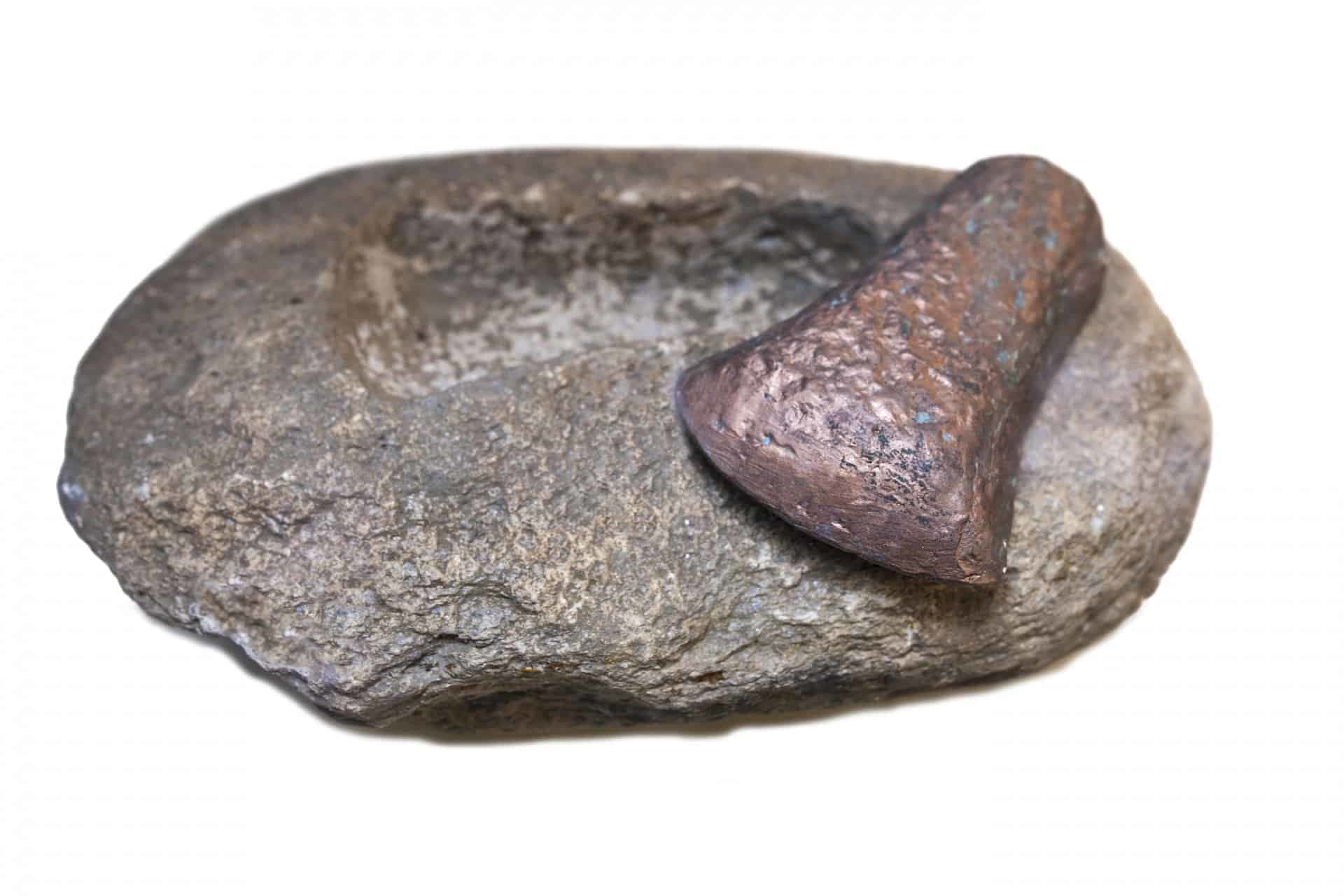
Replica of a Bronze-Age stone mould and copper axe-headThe Bronze Age in Greece witnessed diverse populations honing their metalworking and agricultural skills across various regions. Notably, three distinct civilizations predating ancient Greece thrived during this epoch: the Cycladic, Minoan, and Mycenaean societies.
Cycladic Civilisation (3200 B.C. to 1100 B.C.)
The Cycladic civilization thrived on the clusters of islands in the Aegean Sea known as the Cyclades, with over 2,000 islands and islets, of which only 25 are currently inhabited. The name “Cyclades” originates from the Greek word “kyklos,” meaning circle, as these islands form a circular shape around the prominent island of Delos (Cartwright 2012). Primarily a fishing community, the Cycladic people also cultivated resources native to the islands such as wheat, barley, olive trees, and marble, engaging in significant trade among the islands to exchange goods and intertwine their unique cultures.
Notable artifacts, particularly ceramic figurines depicting wide-hipped, nude women, highlight the emphasis on women’s fertility in Cycladic culture, showcasing the importance of female symbolism. In smaller islands, the necessity of traveling to neighboring communities for partnerships was crucial for sustaining population growth.
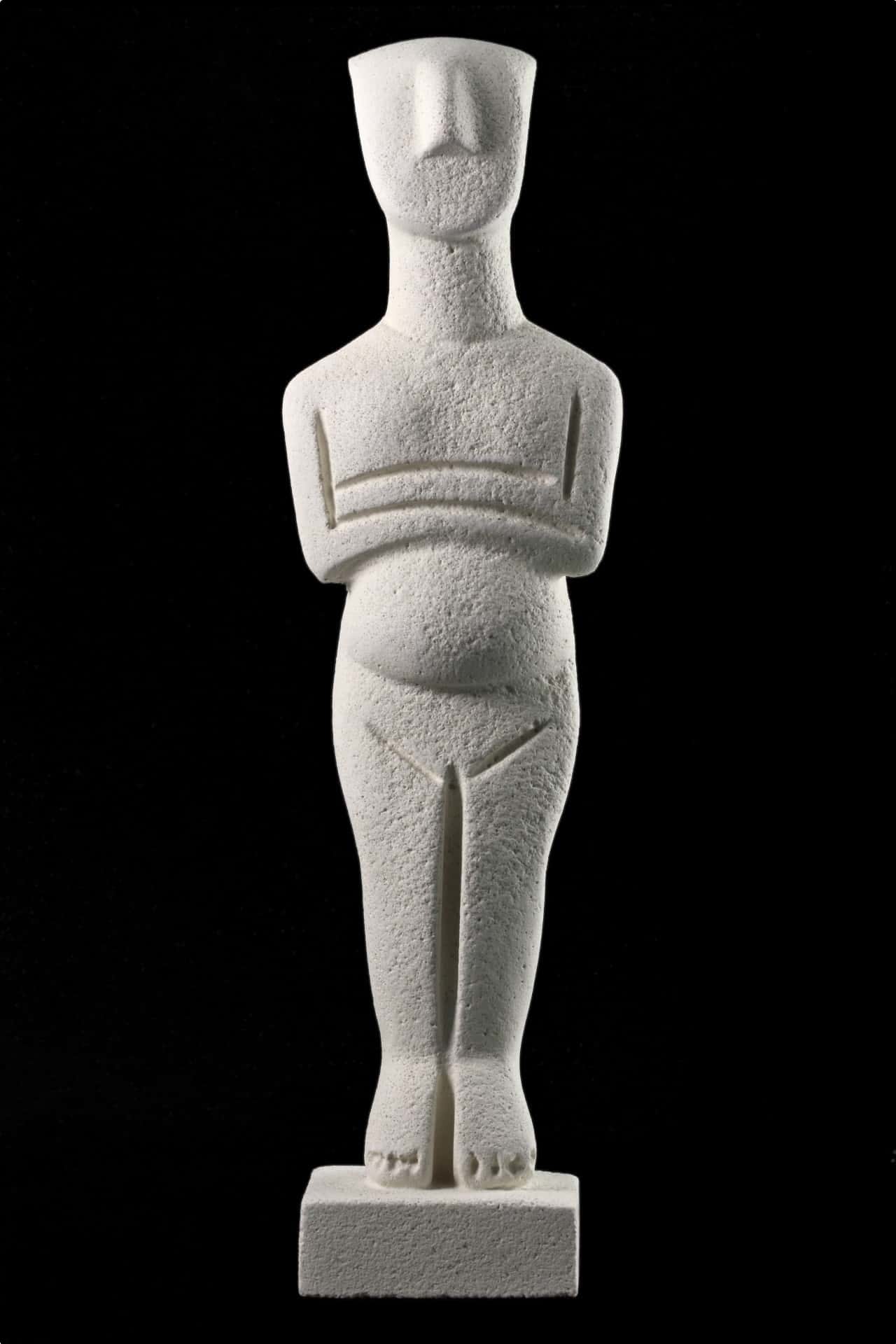
Despite efforts to bolster populations, the Cycladic islands found themselves vulnerable to colonization due to their small size and limited defenses. The dominant naval power of the Minoans enabled them to assert political dominance over the Cycladic people, evidenced by archaeological discoveries revealing a surge in Minoan pottery, trade, and overall influence between 2200 B.C. and 1700 B.C., overshadowing much of the Cycladic culture. Subsequently, following the Minoan decline, the Cyclades came under Mycenaean influence. Around 1100 B.C., the fate of the Cyclades mirrored that of the Mycenaeans, marking the end of an era for these ancient island civilizations.
Minoan Civilisation (2700 B.C. to 1500 B.C.)
The Minoan civilization, considered the first ‘great’ civilization in human history, thrived on the island of Crete and was named after King Minos by Sir Arthur Evans. According to Greek mythology, King Minos, the son of Zeus and Europa, a Phoenician princess, was a formidable ruler known for his colonization efforts, establishment of a powerful navy, and frequent conflicts with Athens.
Crete served as a crucial trade hub, leveraging its natural resources like timber, wool, tin, and copper from both Crete and its conquered territories to produce valuable trade goods such as bronze and ceramics. The innovation of the pottery wheel in Crete led to advancements in ceramic production, evident in the discovery of around 150 cups in Knossos, with artifacts from Crete reaching as far as Egypt. The strategic combination of Minos’ navy and Crete’s expansive trade network elevated the Minoan civilization both economically and culturally.
Among the notable discoveries on Crete is Knossos, recognized as the oldest city in Greece. Sir Arthur Evans’ excavation revealed a vast complex with over 1,000 rooms, showcasing a multi-story labyrinthine structure with sophisticated drainage systems. The site also unveiled a plethora of wall paintings, notably featuring bulls, alongside remnants of a script known as Linear A.

Knossos is believed to be the historical backdrop for the myth of the Minotaur, where King Minos, seeking divine approval from Poseidon, was cursed with a half-bull, half-human offspring locked in a labyrinth and fed with tributes from Athens until its defeat by Theseus, the Athenian prince.

A statue of Theseus combating the Minotaur found in the Tuileries Garden, Paris.The decline of the Minoan civilization has been attributed to natural calamities, notably the eruption of a volcano on Santorini triggering a devastating earthquake and tsunami across the Aegean islands. While Crete itself showed minimal tsunami-related damage, the widespread impact on trade resulting from the disaster precipitated economic challenges (Luis 2017)., paving the way for the ascent of the Mycenaeans as the dominant regional power.
Mycenaean Civilisation (1900 B.C. to 1100 B.C.)
The Mycenaean civilization originated in mainland Greece, deriving its name from the prominent center of Mycenae, ruled by the legendary King Agamemnon in Greek mythology. Homer immortalized Mycenae and Agamemnon in his epic works, the Iliad and the Odyssey, notably critiquing Agamemnon’s self-focused leadership that prolonged the Trojan War unnecessarily (Cartwright 2018). Homer, a monumental figure born between 1200 B.C. and 900 B.C., remains a profoundly influential writer in history. It was the Mycenaeans who developed the written language known as Linear B, a precursor to Ancient Greek that could be deciphered unlike the Minoan Linear A script.
According to Mark Cartwright, typical Mycenaean architecture featured megarons, central halls with pillared entrances that later influenced the iconic design of Greek temples like the Parthenon (2013). Complementing these megarons were massive Cyclopean walls surrounding the palace complex, named after the mythical one-eyed giants, emphasizing the strength required to construct them.
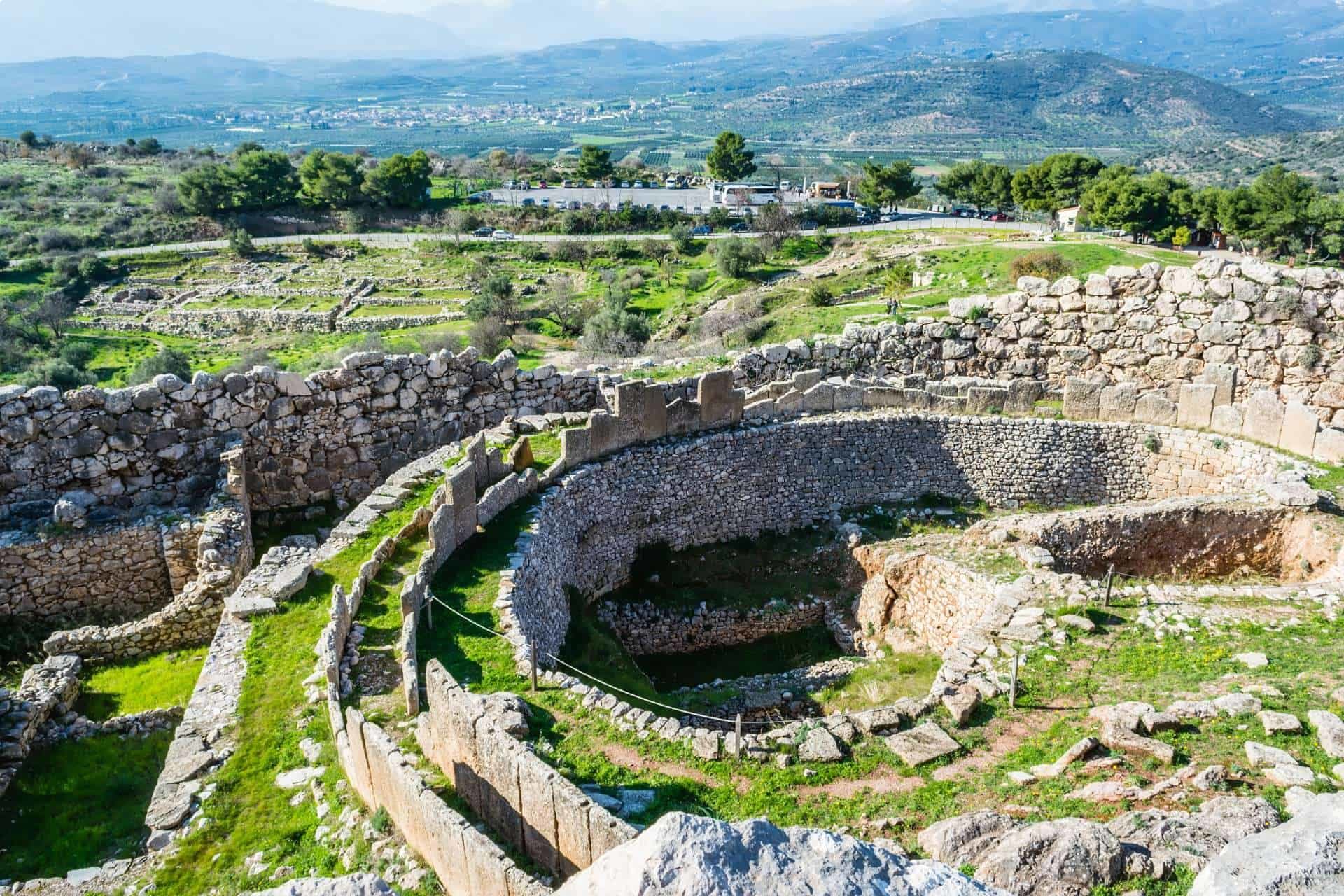
Archaeological ruins in Mycenae, UNESCO world-heritage site.The Mycenaeans revitalized trade networks in the region, unearthing artifacts crafted from ivory, gold, and copper, indicating a wealthy elite with extensive trade links extending far beyond their immediate territory (Cartwright 2013). Their cultural influence unified mainland and island Greeks, giving rise to numerous Greek myths that endured beyond the fall of the Mycenaean civilization, sustaining Greek culture through the dark age.
Greek Dark Age
The collapse of Mycenaean civilization around 1200 B.C. remains a topic of debate with various theories but no definitive explanation. Archaeological findings, such as reinforced palaces and depictions of armed men on painted vases, suggest a significant event like a Dorian invasion or a political upheaval leading to decline. Factors like climate change, fires, and drought have also been proposed as contributing to the downfall. Despite the uncertainty, it is clear that the fall of the Mycenaeans marked the beginning of the Greek ‘dark age” characterized by a lack of written records and art, leaving archaeologists with limited insights into the period from 1200 B.C. to 800 B.C.
The resurgence of Greek history in the 800s B.C. marked a new chapter in human advancement. Building on the foundations laid by the Bronze Age civilizations and the Mycenaean culture, ancient Greece evolved into a distinct and influential society. Exploring the developments that followed the emergence of Greek civilization and delving into ancient Greek history can provide valuable insights. For a deeper dive into this fascinating period, consider exploring “The Story of Greece and Rome” by Tony Spawforth (2018, Yale University Press).

Additional Articles That May Interest You
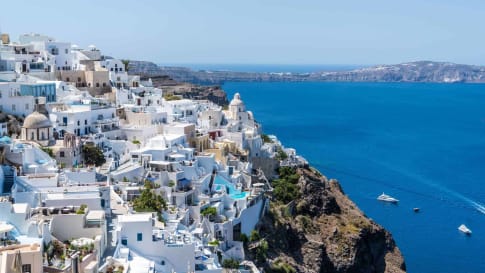
History of Santorini
History of Santorini: From the Minoans to the Greek Republic The history of the Greek islands of Santorini (or Thera) stretches back to the Neolithic Era more than 3,000 years ago. A place of great importance…
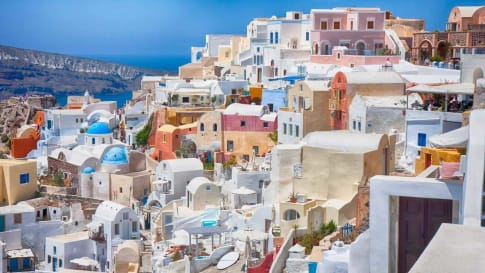
Bronze age civilisations of the Eastern Mediterranean Islands
Bronze age civilisations of the Eastern Mediterranean Islands As you explore these islands and learn about the cradle of Western civilisation, ancient cultures and history will come to life. Visit magical Santorini, which contains a…
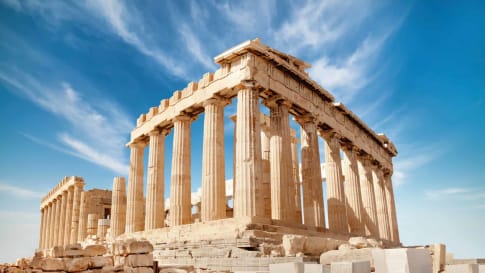
Creating Athens
Creating Athens Aerial view of Athens, Greece This article Creating Athens traces the civilisations of antiquity to the rise of Athens as a city-state after the world’s first “Dark Age”. It is intended as background…
About Odyssey Traveller

Odyssey Traveller is committed to charitable activities that support the environment and cultural development of Australian and New Zealand communities. We specialise in educational small group tours for seniors, typically groups between six to 15 people from Australia, New Zealand, USA, Canada and Britain. Odyssey Traveller has been offering this style of adventure and educational programs since 1983.
We are also pleased to announce that since 2012, Odyssey Traveller has been awarding $10,000 Equity & Merit Cash Scholarships each year. We award scholarships on the basis of academic performance and demonstrated financial need. We award at least one scholarship per year. We’re supported through our educational travel programs, and your participation helps Odyssey Traveller achieve its goals.
For more information on Odyssey Traveller and our educational small group tours, do visit and explore our website. Alternatively, please call or send an email. We’d love to hear from you!
Related Tours
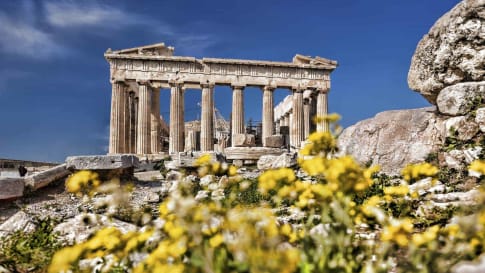
22 days
Apr, Sep, MayGreece small group escorted history tour
Visiting Greece
Our 22 day small group tour explores the land of great philosophers, myths, and legends. We will learn about the culture and heritage of modern Greece whilst exploring and learning Athens, which only found independence in its uprising from the Ottoman Empire in the 19th century.
From A$14,145 AUD
View Tour
20 days
Sep, AprCrete Small Group Tour: The Minoans
Visiting Greece
Crete rich in UNESCO World heritage sites this small group escorted tour provides a travel experience for guests with experienced local guides to remember. For senior couples or single travellers who seek to travel with other like minded people to destinations rich in ancient history then this in one of many small group journeys to be enjoyed.
From A$13,500 AUD
View Tour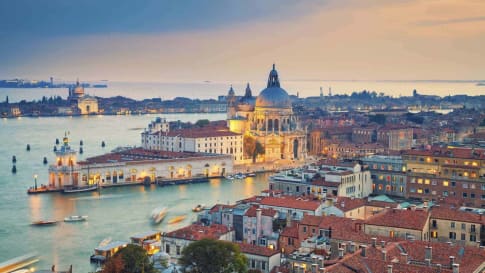
27 days
DecEuropean Cities Small Group History and Cultural Winter Tour
Visiting Albania, Croatia
An escorted tour A Journey that commences in Rome and takes in 12 destinations along its journey to Athens. This is an off season small group journey with like minded people. A small group tour across Southern Europe with local guides sharing authentic in-country authentic experiences for mature couples and solo travellers.
From A$17,295 AUD
View Tour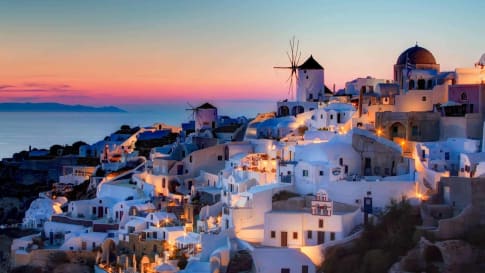
21 days
Apr, OctSantorini, Crete and Cyprus Small Group Tour | Eastern Mediterranean Islands Tour
Visiting Cyprus, Greece
A fascinating small group tour, with an amazing mix of culture and history – the islands of Greece, the cradle of Western civilisation, where traces of a centuries-old history exists. Visit Santorini, a remnant of a volcanic era; Crete, the home of the Minoan civilisation with important archaeological finds at Knossos and Phaistos. Rhodes, inhabited since the Stone Age; and venture further to the island of Cyprus, where east meets west.
From A$17,545 AUD
View Tour